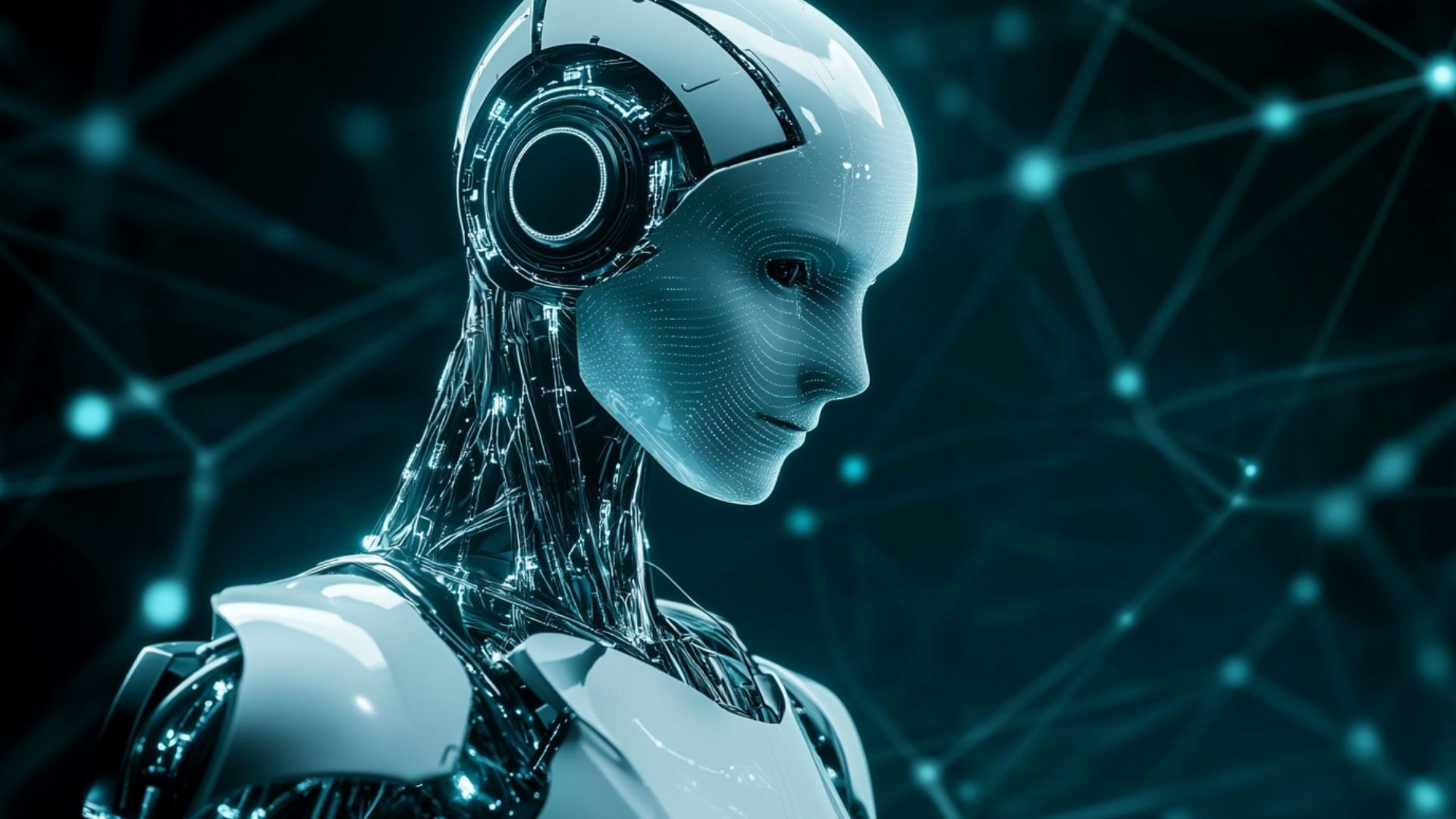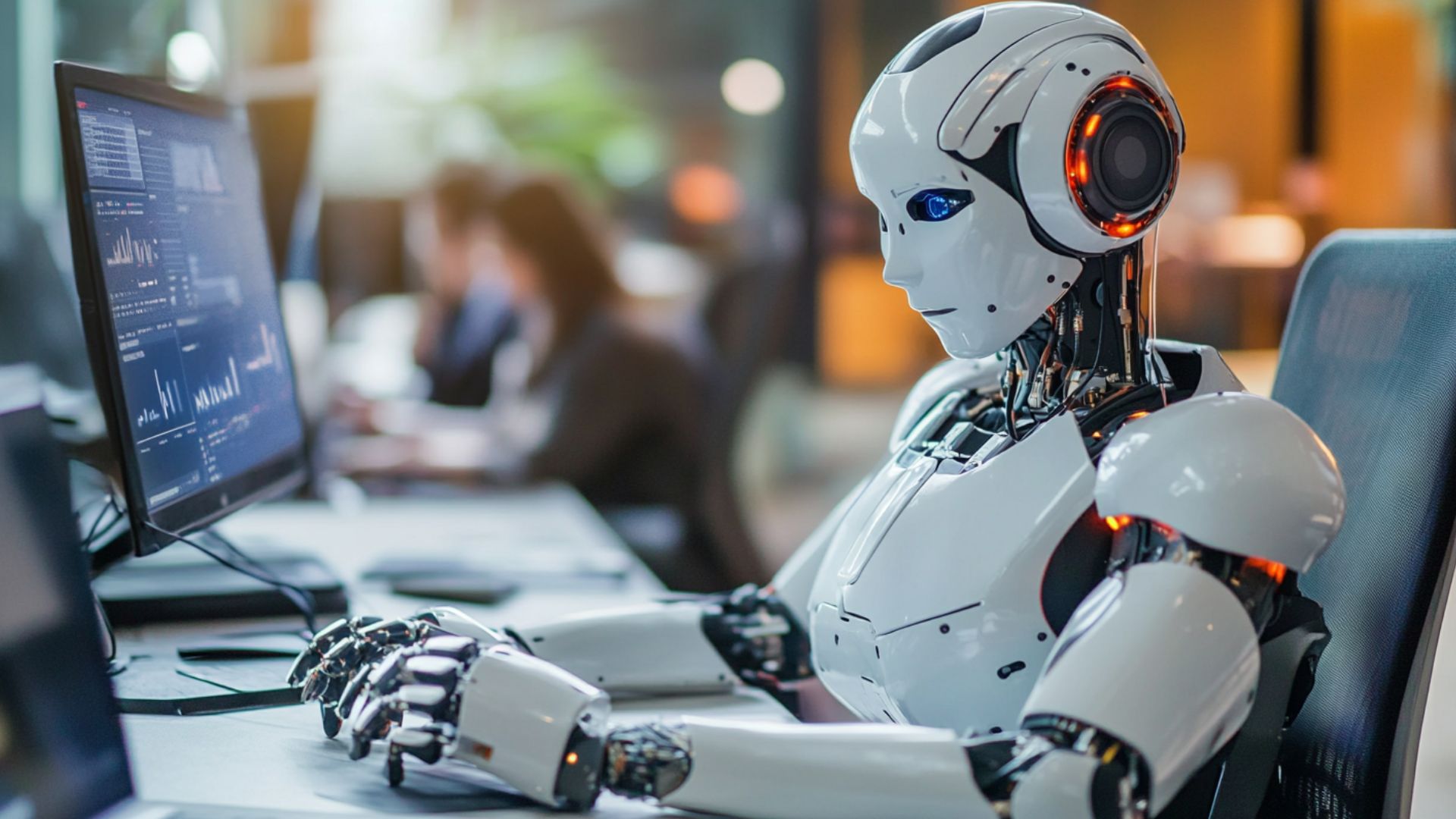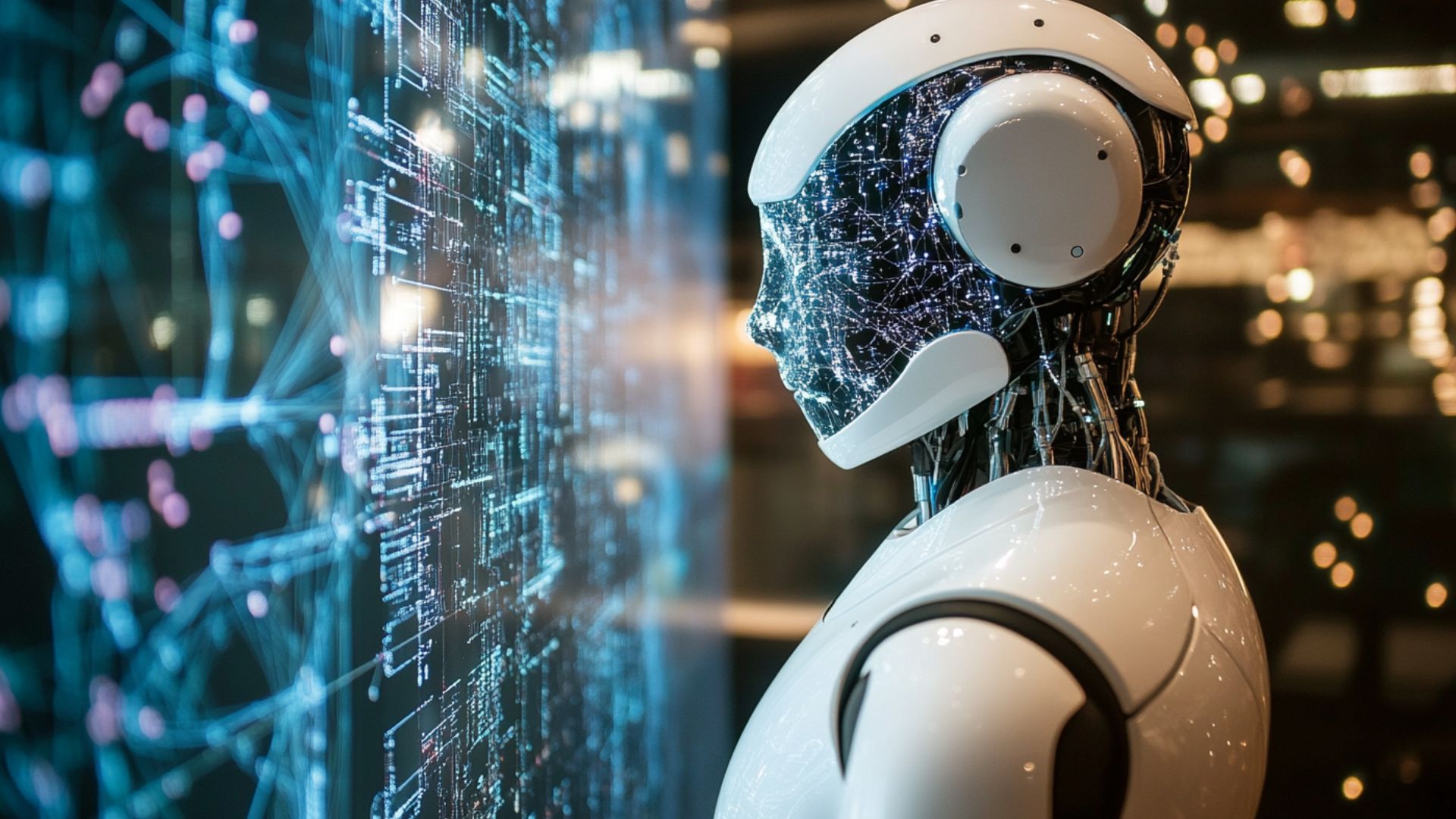AI in Restaurants: How Boost Your Restaurant ?

The rapid development of technology has affected even such a conservative business as a restaurant. It offers online table reservations, QR menus, and unique personal offers. The latest innovations quickly became the norm. Now, the use of new technologies in the restaurant industry seems to be something complicated and “not for everyone.” It's highly likely that in the near future, restaurants that don't use them in their work will seem outdated. Stay up-to-date and start mastering new technologies right now. Integrating artificial intelligence (AI) tools for restaurants revolutionizes the food service industry.
AI-driven insights help restaurateurs understand visitors' preferences and behavior. They enable tailored marketing campaigns and customized menu recommendations. It not only increases client satisfaction but also boosts loyalty and repeat business. Advanced AI systems can predict trends and optimize pricing. Also, they enhance food safety standards. AI-powered restaurants offer a significant advantage as the industry becomes more competitive. Embracing these tools is not just a trend. It is a strategic move towards a more efficient and client-centric future.
Transforming Customer Service with Conversational AI
The advent of conversational AI transforms how restaurants engage with their patrons. It significantly enhances the client experience. Here’s how AI for restaurants is leveraging this technology:
- Personalized Interactions: Conversational AI can analyze client data. It offers customized recommendations and promotions. They make dining experiences more tailored and enjoyable.
- 24/7 Customer Support: AI chatbots provide round-the-clock assistance. They handle inquiries and reservations at any time. Thus, it improves accessibility and convenience for customers.
- Efficient Order Management: Innovative restaurant technology streamlines the ordering process. They reduce wait times and ensure accuracy. Such systems take orders directly from customers through voice or text interactions.
- Real-Time Feedback Collection: Restaurants can use AI to gather information immediately. It allows quick responses to issues and continuous improvement in service quality.
- Enhanced Loyalty Programs: Conversational AI helps manage and personalize them. It offers rewards and incentives based on individual customer preferences and behaviors.
We have prepared examples of AI-driven client service improvements for you. Among them are:
- Voice-Controlled Ordering Systems: Some restaurant AIs now feature voice-activated ones. Ordering systems enable customers to place orders using smart speakers or mobile devices. It speeds up the process and adds a layer of convenience.
- Intelligent Recommendations: AI analyzes past orders and preferences to suggest menu items. Customers are likely to enjoy them. This guidance enhances the dining experience and encourages repeat visits.
- AI-Driven Client Support: Chatbots can answer frequently asked questions and provide menu information. Also, they may assist with special requests. They reduce the workload on human staff and ensure consistent service.
- Automated Reservations: Smart restaurant technology utilizes AI to manage table reservations efficiently. Customers can book tables via AI-powered chatbots. They seamlessly handle cancellations and modifications.
- Integration with Mobile Apps: Many restaurants integrate conversational AI with their mobile apps. They offer a seamless experience where customers can browse menus and place orders. Also, there they provide feedback all within one platform.
By adopting these AI-driven solutions, restaurants can significantly improve client satisfaction and retention. Integrating technology in the restaurant industry is revolutionizing customer service. They pave the way for a more efficient, responsive, and customer-centric dining experience.
Enhancing Menu Personalization with AI
Think about how technology is changing the restaurant industry. AI is revolutionizing how menus are generally personalized. They will meet individual client preferences. Here’s how AI achieves this:
- Data Analysis: AI systems analyze vast amounts of data from various sources. They include past orders, browsing patterns, and social media interactions. This analysis helps understand customer preferences and dietary restrictions.
- Dynamic Menus: Some of the best AI for restaurants use dynamic menus. They change in real time based on customer preferences and trending dishes. It ensures that the offerings are always appealing and relevant.
- Tailored Recommendations: AI can suggest dishes that align with a client’s taste and dietary needs based on the data. For instance, a customer frequently orders vegan dishes. So, the AI will prioritize vegan options in future recommendations.
- Enhanced Dining Experience: Technology in restaurants makes customers feel valued and understood. It leads to a more enjoyable dining experience.
Impact of personalized experiences on client loyalty and repeat visits:
- Increased Satisfaction: Customers must receive recommendations that match their tastes. They are more likely to enjoy their meals. It results in higher satisfaction levels.
- Word-of-Mouth Marketing: Happy customers share their positive experiences with friends and family. They drive new business through personal recommendations.
- Higher Spending: Personalized guidance can encourage customers to try more items. They might not have considered them. It increases the overall spend per visit.
Incorporating artificial intelligence in restaurants to enhance menu personalization improves client satisfaction. Also, it boosts loyalty and encourages repeat business. By understanding and catering to individual preferences, restaurants can create memorable dining experiences.
Streamlining Table Management and Reservations
AI in restaurants optimizes table management and reservations. It ensures a smoother operation and enhanced customer experience.
- Optimized Table Management: AI solutions can predict peak times and optimize table assignments. They reduce wait times and ensure that tables are efficiently used. By analyzing reservation and walk-in patterns, AI can dynamically adjust table availability.
- AI-Driven Reservation Systems: Restaurant AI allows customers to book tables online seamlessly. These systems can handle complex requests. These include large group reservations or specific seating preferences. AI systems send reminders to reduce no-shows.
- Reduced Wait Times: AI manages the flow of guests. AI minimizes the time customers spend waiting for a table. AI can also predict and alert staff about upcoming busy periods. It allows for better preparation.
Bots restaurant in real life has many benefits for both patrons and staff. Among them are:
- For Patrons: AI-driven reservation systems offer a convenient way to book tables. Customers can see real-time availability, quickly change reservations, and receive instant confirmation.
- For Staff: These systems free up staff from managing bookings. It allows them to focus on providing better service. AI can also provide insights into customer preferences and past visits. They help staff to offer a more personalized experience.
Incorporating AI tools for restaurants enhances operational efficiency. It significantly improves the client experience, from personalized menu recommendations to optimized table management. AI helps create a more seamless and enjoyable dining journey.
Boosting Sales and Marketing Through AI Insights

AI is transforming sales and marketing strategies. It leverages AI-driven data analytics. Here’s how it enhances marketing and increases sales:
- Enhanced Marketing Strategies: AI analyzes client data to identify trends, preferences, and behaviors. By understanding these insights, restaurants can create targeted marketing campaigns. They resonate with their audience. For example, AI can determine which promotions attract specific customer segments. It leads to more effective and efficient marketing efforts.
- Highly Targeted Promotions: AI enables restaurants to implement highly targeted promotions. Analyzing past sale behavior can predict which visitors will likely respond to specific offers. It ensures promotions reach the right audience. This personalized approach increases the likelihood of conversion and customer engagement.
- Upselling Techniques: Technology in the restaurant industry can identify opportunities for upselling. AI does it by recommending complementary items. They are typically based on customer preferences and order history. For instance, if a customer frequently orders a particular dish, the AI can suggest adding a dessert that pairs well. It enhances the visitor's experience and boosts the average transaction value.
Let's explore AI-driven enhancements in sales and marketing:
| Aspect | AI-driven benefits |
| Enhanced marketing strategies | AI identifies trends and client preferences for targeted marketing campaigns. |
| Targeted promotions | Personalized offers based on past purchase behavior. They increase conversion rates. |
| Upselling techniques | Suggests complementary items to boost average transaction value. Also, they enhance visitors' experience. |
Restaurants must incorporate machine learning in the food industry. It enables them to create more personalized, efficient, and effective marketing strategies. They ultimately lead to increased sales and visitor satisfaction.
AI-Powered Inventory Management for Cost Efficiency
AI solutions are revolutionizing inventory management. They leverage AI to predict inventory needs and reduce waste. Here’s how AI contributes to cost efficiency:
- Predicting Inventory Needs: AI analyzes historical sales data, seasonal trends, and client preferences. It forecasts future inventory requirements. It ensures that restaurants order the right quantities. They reduce the risk of overstocking or understocking.
- Reducing Waste: AI helps minimize it by accurately predicting inventory needs. It ensures that perishable items are always used before expiration. AI leads to significant cost savings and more sustainable operations.
Here are real-life cases of AI in inventory management:
- Restaurant A: Implemented AI-driven technology in restaurants to manage inventory. The result was a 20% reduction in food waste and a 15% decrease in overall inventory costs.
- Restaurant B: Used AI to analyze purchasing patterns and adjust orders accordingly. It achieves a 25% cost saving on perishable goods.
Here is a table of AI's impact on inventory management:
| Aspect | AI-driven benefits |
| Predicting inventory needs | Ensures accurate ordering based on sales data and trends. They reduce overstocking/understocking. |
| Reducing waste | Minimizes food waste by predicting usage. It optimizes inventory turnover. |
| Real-life cases | Restaurant A: 20% reduction in waste, 15% cost saving. Restaurant B: 25% saving on perishables. |
Adopting advanced restaurant order automation ensures efficient inventory management. It leads to significant cost savings and enhanced operational sustainability.
Optimizing the Supply Chain with AI
AI streamlines the restaurant supply chain, ensuring efficient operations and timely deliveries. Here’s how it optimizes the supply chain:
- Demand Forecasting: AI analyzes historical sales data, seasonal trends, and external factors. These include weather patterns to predict demand accurately. It allows restaurants to procure ingredients and supplies in optimal quantities. They minimize excess inventory and stockouts.
- Route Optimization: AI algorithms optimize delivery routes. They are generally based on real-time traffic conditions, delivery schedules, and customer locations. It reduces transportation costs and ensures timely deliveries to customers.
AI seamlessly integrates with existing inventory management, procurement, and logistics software. By connecting these systems, AI improves data visibility and coordination. It happens throughout the supply chain. It enables smoother operations and better decision-making. Integrating smart restaurant technology empowered by AI enhances supply chain efficiency. It improves service quality by ensuring restaurants have the right ingredients at the right time. AI minimizes waste and meets customer expectations for timely deliveries.
Improving Employee Training and Workflow with AI

Virtual assistant technology revolutionizes employee training and workflow management in the restaurant industry. Here are the ways innovative restaurant technology tools are making a difference:
- Virtual Assistant Training: AI-powered agents provide interactive training modules. They simulate real-world scenarios. They offer consistent and personalized training experiences for new hires. Such aids ensure they learn operational procedures efficiently.
- On-the-Job Support: These AI assistants provide instant access to information during their shifts. They are menu details, allergen information, and customer preferences. This real-time support enhances employee confidence and reduces errors.
- Performance Monitoring: AI tools analyze employee performance data. It is order accuracy and customer feedback. AI tools identify training needs and areas for improvement. This feedback loop helps in continuous skill development.
- Task Automation: AI automates order-taking and payment processing. It allows staff to focus on delivering excellent client service and handling more complex tasks.
AI for restaurants has many benefits. They are enhancing staff productivity and service quality. Consider these benefits:
- Increased Efficiency: AI streamlines workflows, reducing wait times and improving operational effectiveness.
- Consistency: AI assistants consistently adhere to service standards and procedures across shifts.
- Improved Customer Experience: AI provides quick, accurate information to enhance client interactions. It leads to higher satisfaction and repeat business.
- Cost Savings: Automating tasks through AI reduces labor costs. It allows resources to be allocated strategically.
Integrating AI-powered virtual agents enhances employee training and workflow. It improves service quality and operational efficiency. These best AI for restaurants are reshaping how restaurants manage their workforce. They ensure they stay competitive in a dynamic industry landscape.
Financial Management Revolutionized by AI
AI is revolutionizing financial management, particularly in retail accounts payable automation. It introduces advanced capabilities that streamline processes and enhance efficiency:
- Accounts Payable Automation: AI automated invoice processing. It reduces manual entry errors and speeds up payment cycles.
- Predictive Analytics: AI analyzes financial data to forecast cash flow. Also, it optimizes inventory levels and anticipates financial risks.
- Fraud Detection: AI algorithms can identify suspicious transactions and patterns. They enhance security and prevent financial losses.
- Expense Management: AI tools categorize and analyze expenses automatically. They provide insights into cost-saving opportunities.
- Compliance and Regulation: AI ensures compliance with financial regulations. It automates reporting and audit processes.
Here are the advantages of integrating AI into financial management:
- Error Reduction: AI eliminates human errors associated with manual data entry and calculations.
- Cost Savings: Reduced operational costs and improved resource allocation are pivotal. It contributes to overall financial savings.
- Decision Support: AI-driven insights enable informed decision-making. They are generally based on real-time and accurate financial data.
Embracing bots restaurants in real life for financial management empowers businesses with enhanced accuracy. Also, it provides them with efficiency and strategic financial oversight. It ultimately drives profitability and growth.


